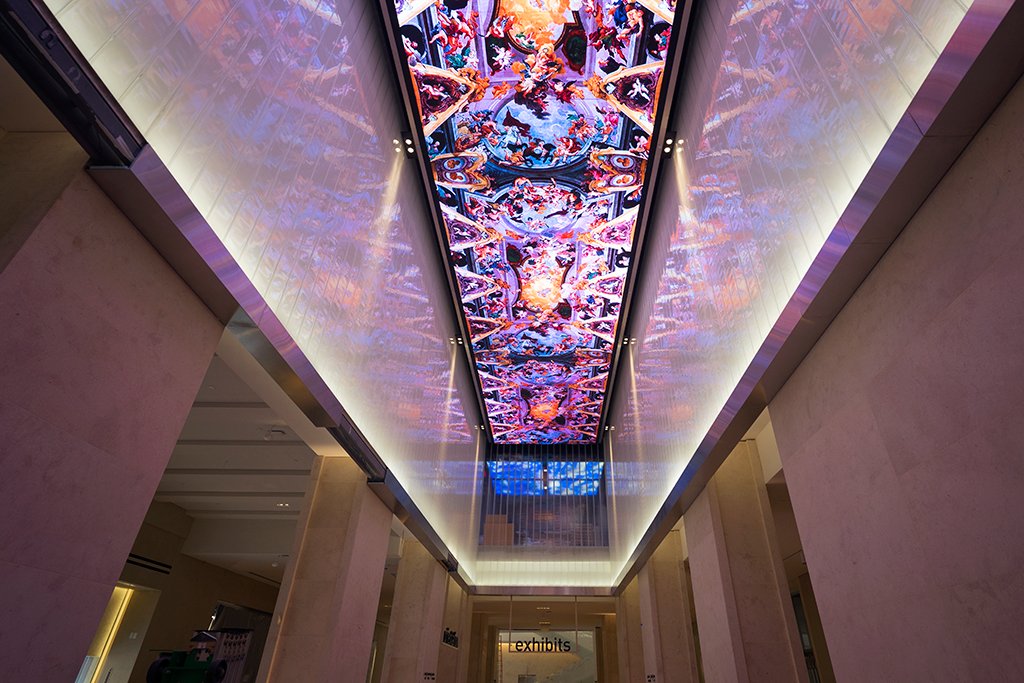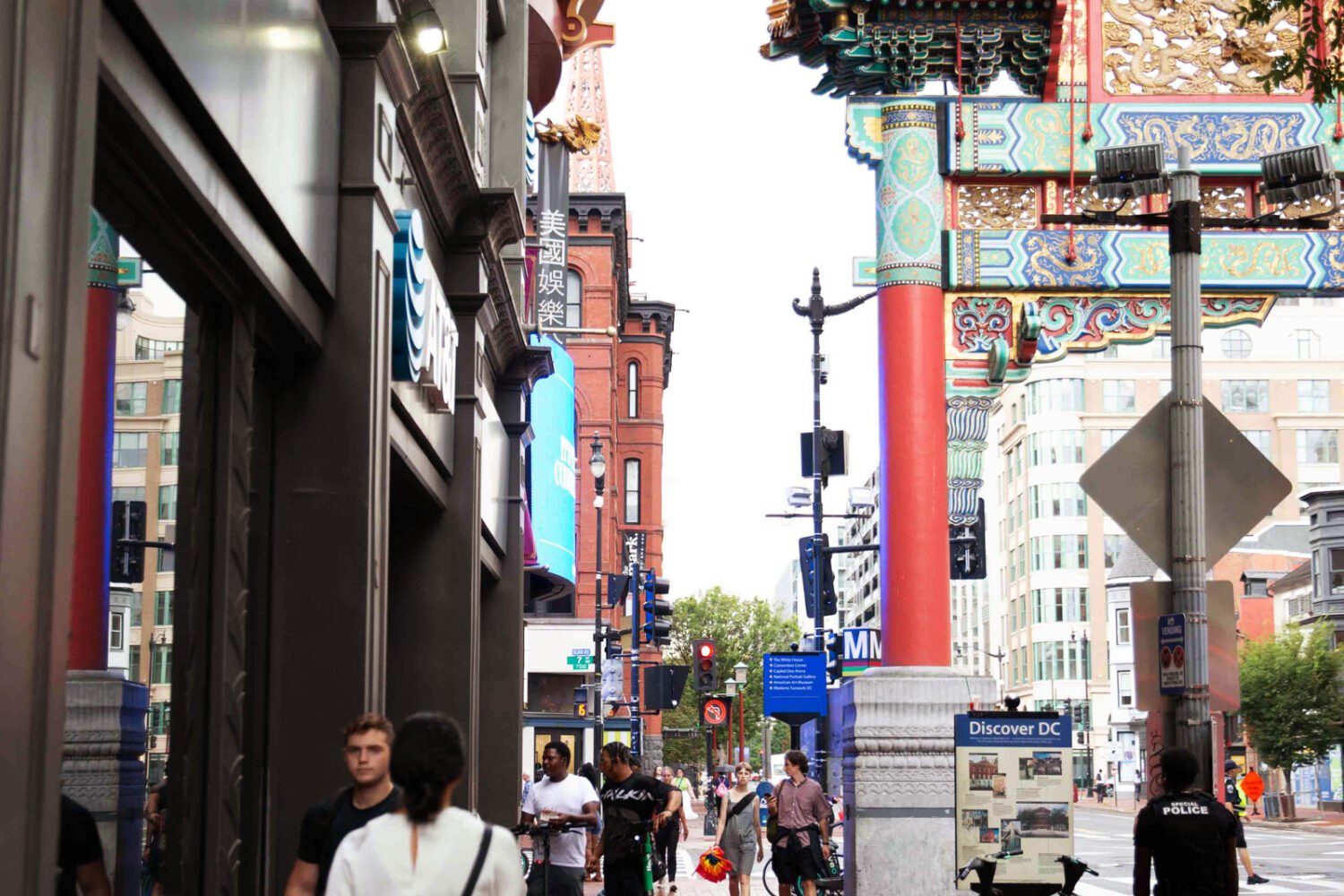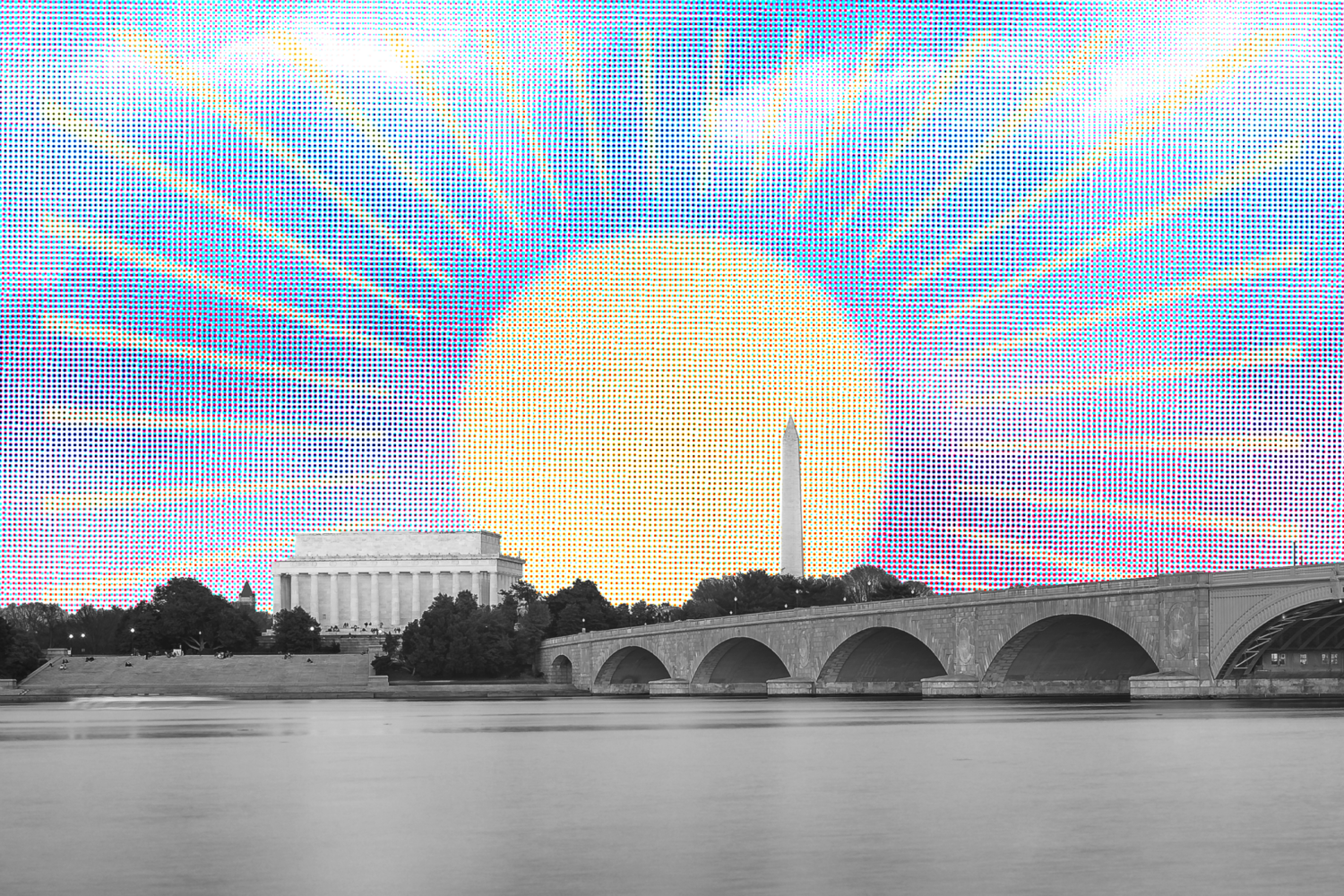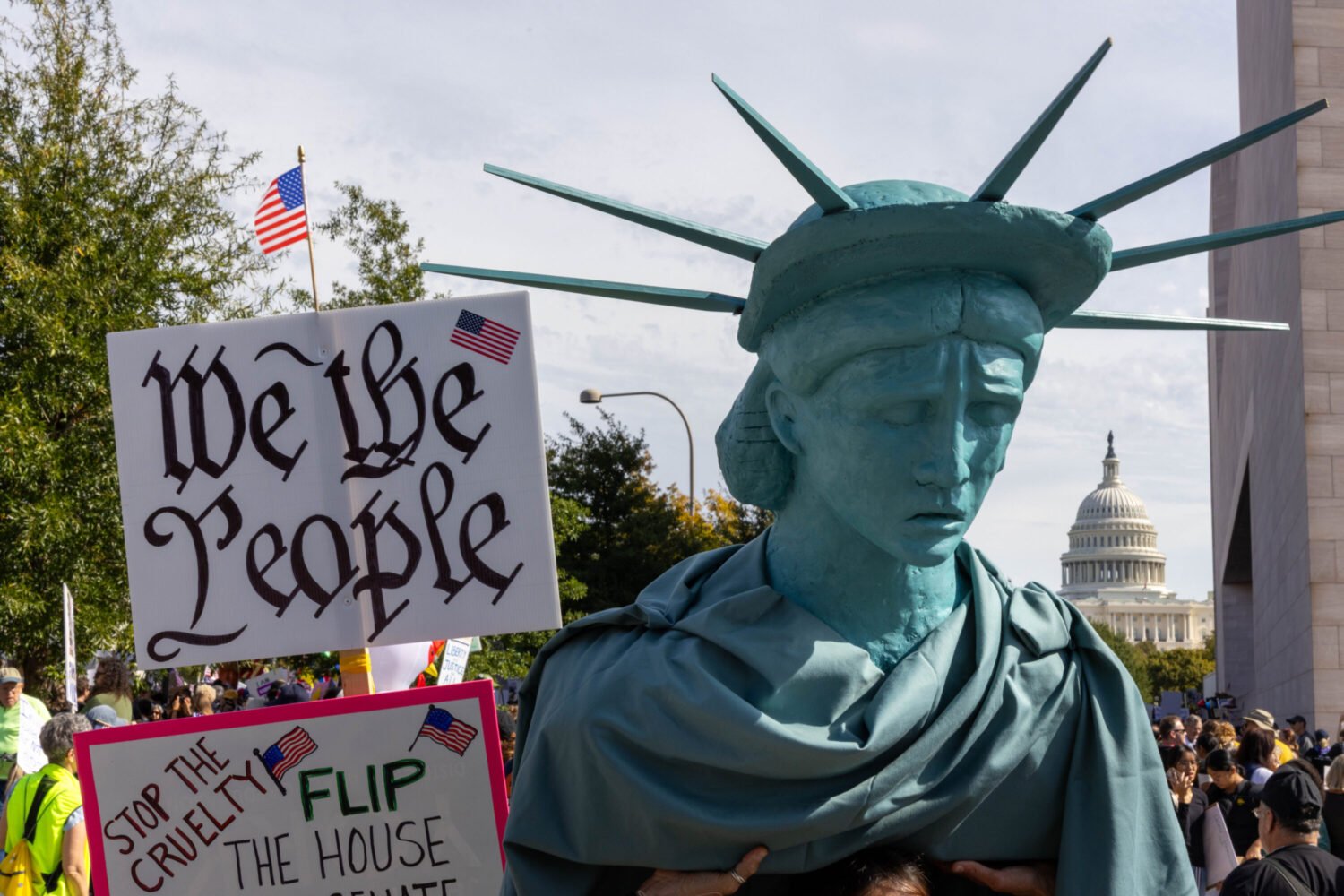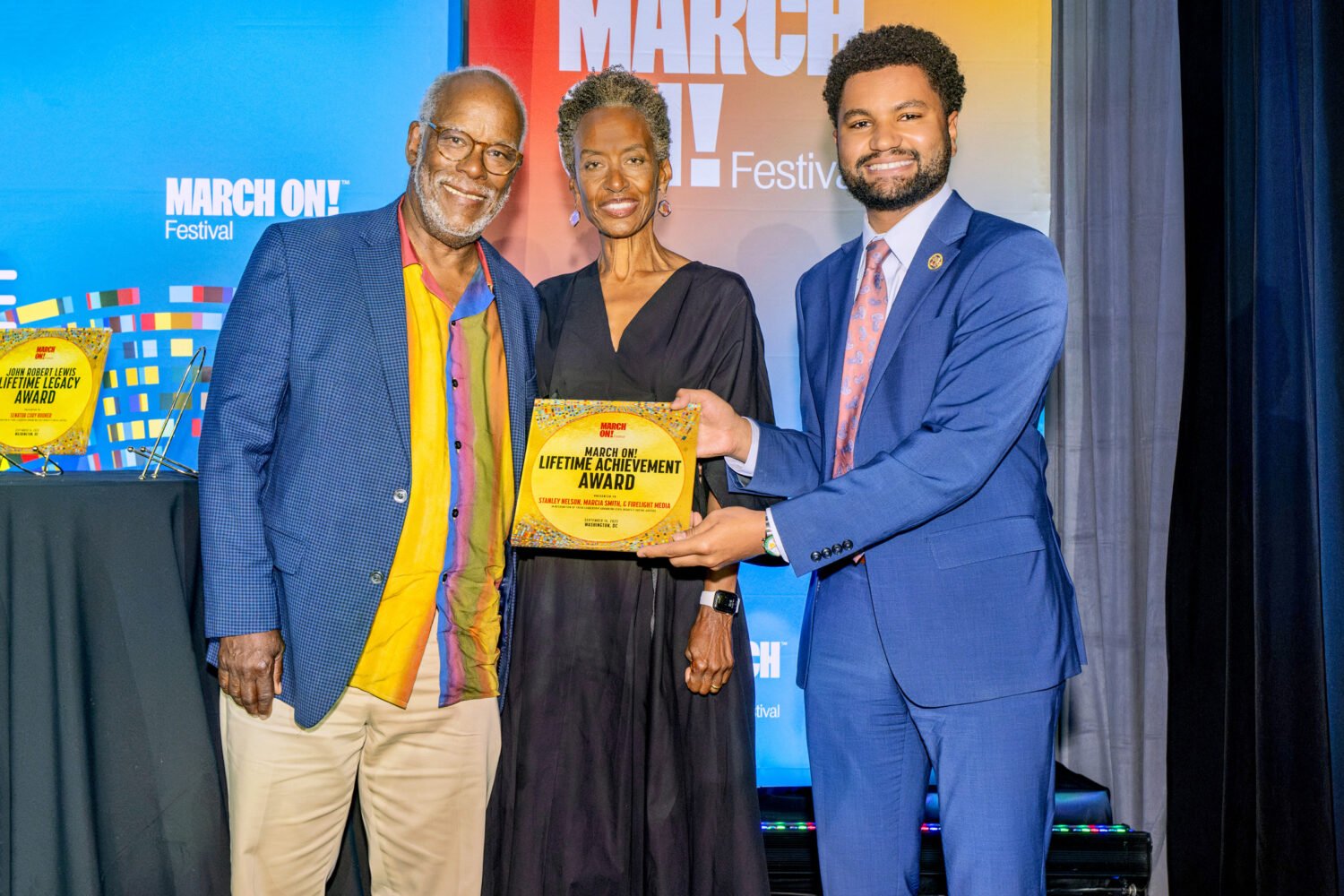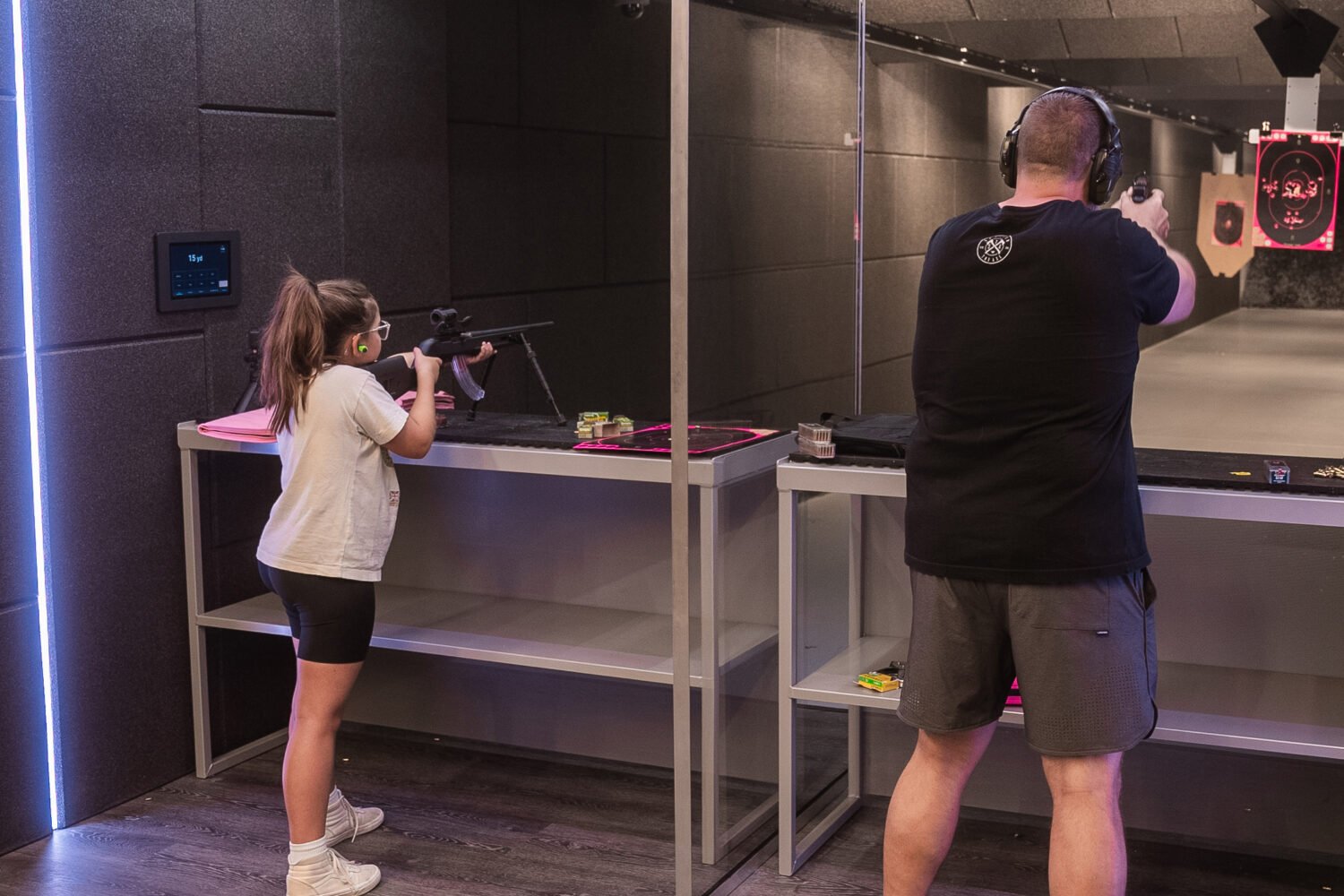It was 4 o’clock on a late-summer Tuesday, and the museum’s soaring atrium was packed with families. The room swirled with sound and color: a British accent, rapid Arabic, two women chatting in Japanese; saris and hijabs, MLB and FIFA jerseys, an oversize American-flag T-shirt. Hundreds of excited visitors had come from all over the world to marvel at the institution’s offerings—exhibits and artifacts known to inspire deep thoughts about the vastness of the universe and humankind’s insignificance, where we come from and what it all means.
That was the National Air and Space Museum.
Two blocks away and a few minutes later, a different, less secular exhibition space was getting ready to let people ponder the heavens. The Museum of the Bible was still a few months from its November 17 opening, and hard-hatted workers were maneuvering boxes and installing display cases. It was as quiet and empty as the other museum had been frantic.
Featuring five exhibit floors and 430,000 square feet of space, the $500-million museum—in the former home of the Washington Design Center—will offer a great deal of Good Book. Visitors can view fragments of the Dead Sea Scrolls and Greek papyruses, as well as somewhat less historic texts (a Bible owned by Elvis, say). One floor is devoted to real scholarship, with more than 500 notable objects. Elsewhere, Biblephiles can take a special-effects-heavy walk through stories from the Old Testament or visit a recreation of first-century Nazareth.
A tour of the partially completed space suggested it will be an odd mix of history and kitsch. An exhibit exploring the Bible’s impact on society seemed especially puzzling, with its statue of Galileo (whom the Catholic Church convicted of heresy for daring to suggest the Earth revolved around the sun) and couture dresses inspired by ecclesiastical garb. A life-size prison cell, which will feature recordings of inmates discussing how the Bible changed their lives, probably underestimates the complexities of problems facing our criminal-justice system. There’s also a high-tech theater, which will launch with a revival of the 2015 Broadway flop Amazing Grace, and—naturally—a gift shop. It was hard to get a real sense of the place while it was under construction, but it seems likely to be inspiring, controversial, entertaining, educational, and ridiculous. Even as a nonbeliever, I was intrigued.
That reaction is by design. The president, Cary Summers, who showed me around, insists the museum is keen to avoid any whiff of proselytizing. Its point of view is carefully nondenominational, and it has signed up dozens of experts and academics from Jewish, Catholic, Protestant, Coptic, and other backgrounds. The museum “is not about religion as much as it is about a book,” Summers says. “There is a big difference. We’re not trying to be preachy. We just want people to have a better understanding of this bestselling book of all time.”
Well, maybe. The Museum of the Bible was largely spearheaded by the deeply conservative family that owns Hobby Lobby, the Oklahoma craft-store chain that—following the 2014 Supreme Court decision about employer-funded birth control—is now synonymous with corporate religiosity and divisive evangelical politics. No matter how much the museum might exude tolerance, it is nonetheless a grandiose, half-billion-dollar veneration of religious thought just steps from the Mall. Though it’s a private operation (like the Newseum and other independent institutions in the area), its size, budget, and location will make it hard to distinguish it from Washington’s famous tourist attractions.
The museum isn’t trying to hide who’s behind it—Hobby Lobby president Steve Green is credited as founder and chairman of the board—and Summers says the Green family hasn’t interfered with the project’s big-tent vision. But wandering around the half-finished halls, I couldn’t help but feel a little uncomfortable with the whole endeavor. The museums on and around the Mall have always represented a distinctly nonpartisan space, no matter what kind of nasty battles have rattled the halls of government. Yes, there have been political spats over exhibits, but mostly these monuments to knowledge and culture offer safe places where people of all backgrounds and beliefs can come together, whether contemplating the National Gallery of Art’s van Gogh self-portrait or studying the Natural History museum’s triceratops skeleton. The Museum of the Bible, well intentioned though it may be, feels like something of a violation.
When it opens, this shiny addition to the Mall area will almost certainly be popular, with busloads of tourists tacking it onto their itineraries. But I’ll probably be spending more time back at the Air and Space museum, taking in its technological wonders, fighting through the noisy throngs, and pondering the cosmos in my own secular way.
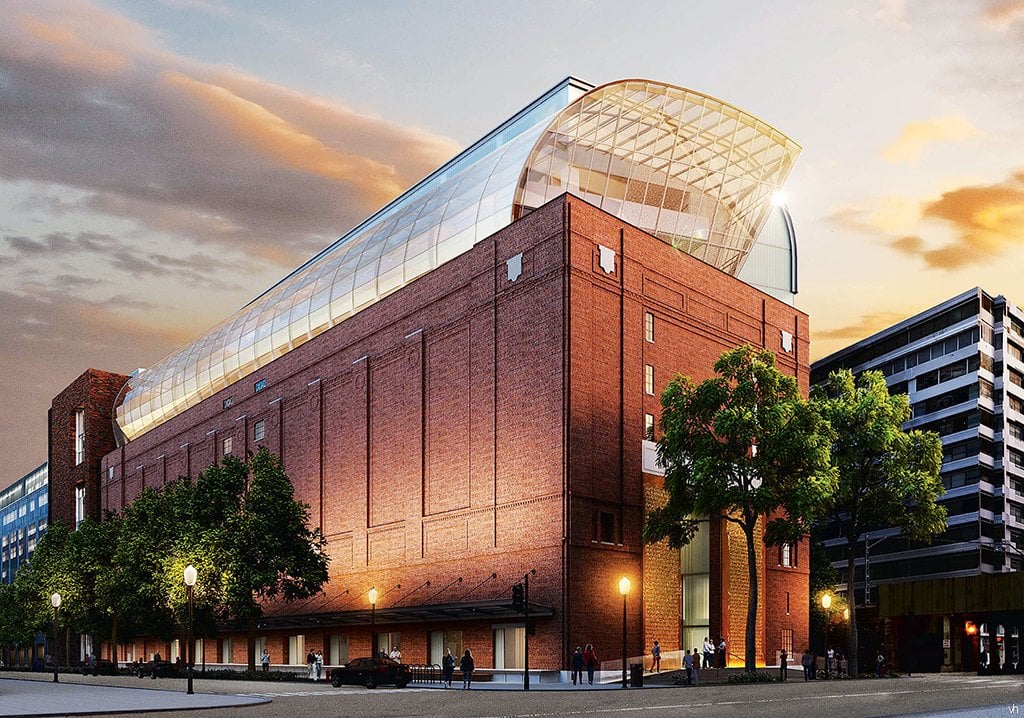
This article appears in the October 2017 issue of Washingtonian.

